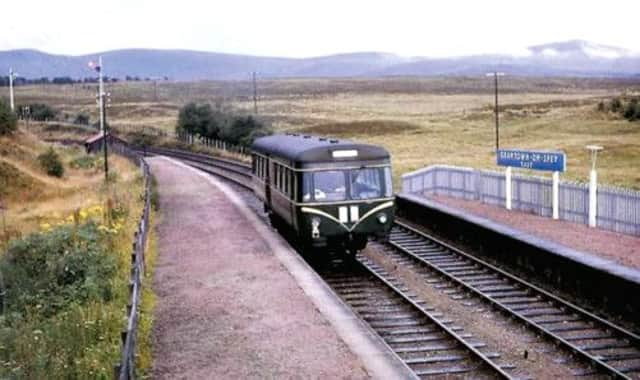Rail on track for ‘new golden age’


Alex Sharkey, one of Network Rail’s most senior officials in Scotland, believes the demand is there to drive significant further growth in train travel if only the lines can be opened.
Sharkey said: “Build it and they will come,” echoing the words of Kevin Costner’s farmer in the 1989 film, who predicts that spectators will flock to a baseball pitch he creates in a field.
Advertisement
Hide AdAdvertisement
Hide AdThe track firm’s director for east Scotland predicted that major lines shut by past cuts would be re-opened and landmark station buildings restored as part of further growth of the already booming network.
Looking forward from this year’s 50th anniversary of the notorious Beeching report which slashed the network, Sharkey predicted the Waverley route between Edinburgh and Carlisle would be completely re-opened by the centenary of that report in 2063.
The Scot, who has recently returned to work north of the Border after stints in England and Wales, said: “It’s been a fabulous time to be part of the railway. It’s very, very exciting.”
The comments are thought to be the first to be publicly aired by such a senior rail executive that look far beyond current improvement projects.
They also chime with transport minister Keith Brown’s view that Scotland is experiencing a “new golden age of the train”. Brown has said the country stands “on the cusp of a transformative era” for rail.
Passenger numbers on ScotRail, the country’s main train operator, have increased by one-third in the last nine years to more than 83 million.
This has partly been fuelled by the restoration of old lines, including a stretch between Airdrie and Bathgate in 2010 which created a new route between Glasgow and Edinburgh. Other parts of Scotland re-connected to rail network over the last decade include Alloa in Clackmannanshire and Larkhall in South Lanarkshire.
This is being followed by a £650m project to electrify the main Edinburgh-Glasgow line for longer and faster trains.
Advertisement
Hide AdAdvertisement
Hide AdAround 50 stations have also been opened or re-opened in Scotland in as many years, with the most recent being Conon Bridge, north of Inverness, in February.
An initial section of the former Waverley line, between Edinburgh and Tweedbank, south of Galashiels, is due to be opened in 2015 at a cost of £353m. The 30-mile line will be the longest to be re-opened for a century. The loss of the 98-mile line in 1969 is regarded as the most grievous of the Beeching cuts, leaving the Borders as the only part of Britain without a railway.
However, Sharkey said: “I would like to see the Waverley line re-opened to Hawick and Carlisle in my lifetime, or at least by 2063.” He also said he looked forward to seeing grand but now derelict station buildings and other railway architecture restored to their former glory.
He pointed to examples on the Strathspey steam railway, which has plans to extend its line from Broomhill to Granton-on-Spey, reconnecting the town to Aviemore after the link was severed 45 years ago.
Sharkey said: “The solum [ground previously occupied by tracks] is still there and beautiful structures remain.”
An industry source said Sharkey’s comments, made to an industry forum organised by watchdog body Passenger Focus, highlighted the potential for rail. “Rail is undergoing unprecedented growth and we have to meet that demand,” the source said. “Network Rail has predicted up to 115 per cent growth in rail travel into Edinburgh, but these models can be notoriously conservative. Where there is demand there are opportunities, and they have to look at where people will want to live and work in the future.
“If more people want to move to rural areas, more trains will be required to serve those communities, like a planned new town near Aberdeen.”
Rail experts and campaigners applauded Sharkey’s far-sighted views.
Advertisement
Hide AdAdvertisement
Hide AdConsultant David Spaven said: “It’s great to see this kind of long-term vision from the rail industry.”
However, Spaven, the author of Waverley Route: The Life, Death and Rebirth of the Borders Railway, also warned against short-sightedness.
He said: “Government failure to think strategically from the 1970s to the 1990s led to dozens of breaches of the old Waverley Route for new roads and housing, adding up to 40 per cent to the cost of the Borders Railway.
“Unbelievably, Transport Scotland has failed to learn from history and is insisting that new road bridges over the single-track sections of the new railway will just provide space for single-track rail width, making future doubling exorbitantly expensive.”
Network Rail said it expected the industry to continue its historic role as a driver of growth. Its spokesman said: “Since its inception, the railway has been a catalyst for growth and economic and social change and the industry will hope to continue to play that central role.”
Paul Tetlaw of transport campaign group Transform Scotland said: “A clear long-term vision for developing the rail network in Scotland would certainly be welcome.”
Twitter: @AlastairDalton